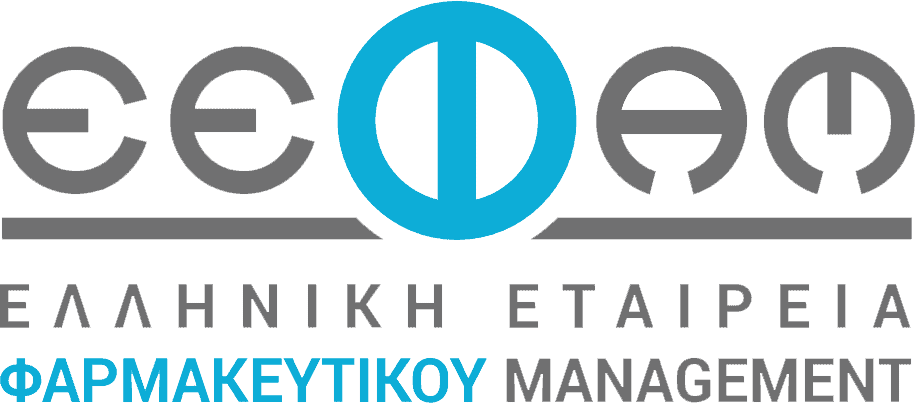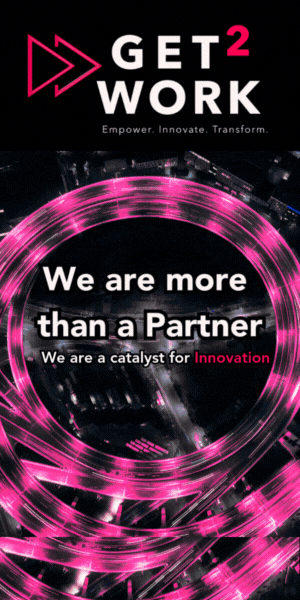Blog
Blog
What works—and doesn’t—in performance management

Much has been written on performance management. Why do so many employees still find it bureaucratic and unfair? On this episode of McKinsey Talks Talent, talent experts Bryan Hancock and Brooke Weddle speak with global editorial director Lucia Rahilly about new research on what drives performance: what motivates employees most, what matters less than you think, and the changes organizations need to make to ensure their feedback, ratings, and review processes are on track.
This transcript has been edited for clarity and length.
What matters to employees
Lucia Rahilly: Let’s start with the headline. What matters most to employees in driving strong performance?
Brooke Weddle: We continue to see a focus on clarity and simplicity. People want to know what they are being held accountable for, which helps inform another critical factor: a sense of fairness. People perceive a sense of fairness when they have greater clarity. And clarity often comes from simplicity.
A failure mode is being well-intentioned but loading a lot of factors into performance management. Why do organizations do this? Because they want to be holistic in terms of how people are evaluated. But it’s often hard to know how those factors are weighted, how they’re measured, and how equipped managers are to understand how people measure up. Simplicity tends to win the day.
People view the role of the manager as important not just for evaluations but also for delivering feedback and helping employees act on that feedback in a way that informs a development journey. And that’s the good news: the manager continues to be important. The somewhat challenging news is that we don’t see managers being able to do this well at scale.
Bryan Hancock: Let’s start with what good goal setting does not look like. It’s not a sheet of paper that has 25 individual measures on it, with some weighted at 5 percent, some at 10 percent, and some at 2 percent. Then it feels like some mathematical formula on the back end is what’s determining how I performed. That’s not what good looks like.
Brooke Weddle: Goal setting should be embedded in the day-to-day. For example, some organizations use objectives and key results, or OKRs. OKRs are not one-off; you keep coming back to them to have a performance dialogue. Something’s wrong if it’s difficult to figure out whether you’re progressing against a goal and if you’re not homing in on the critical few. Having great ways to measure those is what will win the day.
It’s not about the ratings
Lucia Rahilly: Goal setting is one element of what best practices look like. What are other elements of a best-in-class approach to performance management?
Brooke Weddle: During the pandemic, we saw a lot of organizations move to new systems, many of which were ratings-free. They used qualitative ways to describe progress. What we found in the research is that it’s not ratings themselves that matter but knowing where you stand.
It’s about understanding what it takes to be considered a high-performing employee and how to author your own journey to grow and develop. Sometimes the best way to do that is to have very clear markers and indicators, versus having more ambiguous conversations about what’s required for growth.
Bryan Hancock: To me, this was the single-most-striking piece of the research. Whether you’ve got no ratings, two ratings, three ratings, or five ratings doesn’t change employee perception very much. It’s how you implement your system that matters.
Is there a fact-based differentiation between why somebody was rated higher than you were and whether you feel it’s fair? You might hear people say, “I don’t like it when somebody who is a loafer gets a higher review than me.”
The striking takeaway from this research is to focus much more on how we implement the system, how we have the conversations, and how we upskill our managers. Our recommendation should be to focus on getting the execution right. When you do that, the perception of fairness rises, and the perception that these processes are helpful in driving performance rises.
Brooke Weddle: Only about 20 percent of the respondents to our global survey who had no development conversations felt motivated by their company’s performance management. But if you compare that to those who received ongoing feedback in development conversations, the number goes up to 77 percent who felt motivated by it.
Let’s think about how to improve the ability of our managers to have upfront, difficult conversations. Improve the development conversations during the year.
Bryan Hancock
Bryan Hancock: The most recent research showed that in large companies, over a third of managers are perceived as not having the skills to have these conversations. So as we think about how to improve performance management, let’s think about how to improve the ability of our managers to have upfront, difficult conversations. Improve the development conversations during the year. That’s important.
How to approach feedback
Lucia Rahilly: Development feedback can be taxing to give. What can managers do differently to make feedback discussions simpler and more constructive?
Brooke Weddle: First, I would encourage setting a cultural mindset and behavior around continuous learning, including prioritizing hiring internal talent versus looking for unicorns outside. This is everyone’s job. This is not HR’s job.
Managers can also identify ways to make giving feedback not just something they do when they have spare time, but rather part of daily work—and even come up with a ritual for a team. How can you start or end every week with a check-in that has some form of feedback?
I also think managers, when supported by their organizations, can experiment. Using technology could help. Many organizations are looking at performance management as a use case for generative AI. How can managers use generative AI to synthesize live conversations, interview notes, to allow them to spend more time supporting colleagues?
Bryan Hancock: About 43 percent of managers report being burned out. Performance management can become something managers do at the tail end of their day, under enormous pressure for time. As we know from our earlier podcast guest, research psychologist Jamil Zaki, if you don’t have time, you’re less sympathetic.
What that means is managers don’t have time for thoughtful conversations. It’s last on their list. They need to be able to approach these conversations in a way that is both empowering and challenging.
If you’re pressed for time, it’s much easier to say, “You did these three things wrong; let me do them for you right now,” than to step back and say, “Hey, how did you think about this? How did you get here? Let’s talk through that.” That’s a very different, higher-level conversation that requires more skill and time.
Lucia Rahilly: How has hybrid work affected managers’ clarity about what their employees are doing?
Bryan Hancock: Periodic feedback, whether at the end of a week or a month, should truly be about coaching the individual. What we’ve seen is whether in a hybrid environment, a fully remote environment, or a fully in-person environment, unless managers are deliberate about carving out time, that kind of stepped-back, developmental feedback isn’t happening. I don’t think hybrid is necessarily causing a downfall in those types of conversations. There’s a shortage of them regardless of whether our work is in-person or remote.
Brooke Weddle: Thoughtfulness around where and how work gets done relative to a goal is a core part of a manager’s job. That has become more complicated, given that we are working in different formats. As we think about upskilling and supporting managers, having nuanced conversations around goals and accomplishing work is new and needs to be addressed.
Helping managers with challenging conversations
Lucia Rahilly: In your survey, more than half of respondents said their managers do not fall into the skilled practitioner category when it comes to delivering reviews. Is there anything HR should do differently to facilitate better coaching for managers?
Bryan Hancock: Practice with challenging conversations helps. Prepandemic, we were working with a large institution with well over 100,000 employees. Going into review season, we set up coaching sessions where, alongside HR and the training folks, a manager could say, “Here’s the type of feedback I’m thinking of giving; help me give this in the right way.”
One thing I’m excited about is managers being able to use gen AI to try out feedback and then get feedback on the feedback. For example, a bot might say, “Hey, that wasn’t direct enough. That was unclear. You referenced some things that could be perceived as biased.” This builds skills, but it also builds confidence in the conversation. It’s the equivalent of practicing a speech in front of a mirror before delivering it to an audience. With gen AI, instead of a mirror, you’re giving the feedback to a bot. And the bot plays back, saying, “Here are the parts that are helpful and not helpful.”
This is just one example of how HR can provide tools in the right context. But if the manager still doesn’t have time to give feedback, they won’t have time to practice on a bot. So it does require the broader environment to change as well.
Brooke Weddle: I think what HR can do, apart from what Bryan is saying, is stop the paperwork. I’ve worked with at least three organizations in the past eight to 12 months that have made bold moves to simplify their processes.
I think what HR can do, apart from what Bryan is saying, is stop the paperwork. I’ve worked with at least three organizations in the past eight to 12 months that have made bold moves to simplify their processes.
Brooke Weddle
There’s value in taking a hard look at where you’re deriving value. For example, is this additional lever really going to change the feedback, and is this step in the process really required? I’ve seen organizations create a lot of time by simplifying the core elements of their process.
Bryan Hancock: The challenge with simplifying the process is when it’s time to move on because someone is not a good performer, you need a fact-based record of that nonperformance.
But what we’re advocating for is this: instead of designing a performance management process for the 5 percent who may need to leave the organization, let’s design a performance management process for the 95 percent who are going to stay and whom we want to make high performers.
Lucia Rahilly: Have we gotten better at helping managers remove people from roles where they’re a poor fit or not performing?
Bryan Hancock: The short answer is we’ve seen some change. It’s important to have the right interventions and development conversations with those folks early. If somebody feels like they understand what they’re doing, they’re being coached on it, but they’re still not up to the bar, that makes it much easier for them to come to their own realization that it may be time to move on. But managers need to lean in when they see somebody struggling, not lean out.
How important is compensation?
Lucia Rahilly: We haven’t yet talked about money. For some companies in this kind of low- or slow-growth environment, financial rewards may be less liberal than in some years past. And at least in places like the US, inflation and the cost of living are real issues for folks. How much does money matter?
Brooke Weddle: In our survey, more than half of respondents felt motivated when financial rewards were combined with nonfinancial rewards. What do we mean by nonfinancial rewards? Opportunities to grow and develop and, just as powerful, things like praise from your manager, your leader, a senior leader in the company.
This goes back to years of social science research that what people crave is, yes, some form of compensation they deem fair, but above that, a sense of being valued as a human, of meaning in their work, and of connection between what they’re doing and what the company is trying to do. And that their manager sees that and brings that to life.
Bryan Hancock: There is a distinction here for people who are revenue generators: for example, folks in sales, who have a real role in whether they hit that next target or not, whether they knock on the next door. In those worlds, compensation does play a meaningful role.
But if you take a step back broadly, across roles, across organizations, what Brooke is saying is absolutely true: financial rewards matter, but they matter in the broader context. People are motivated by how they feel, and compensation contributes to how they feel. It can contribute to employees feeling rewarded when it comes with nonfinancial rewards and also to feeling not rewarded when they look around and feel their comp isn’t fair.
Lucia Rahilly: Speaking of fairness, we’ve just published our Women in the Workplace research. And obviously there continues to be a gap in women’s pay versus men’s pay for similar positions. Anything folks should be thinking about to reduce bias in assessing impact and performance?
Brooke Weddle: So many things is probably the short answer. If you look at the Women in the Workplace 2024 report, we still have a broken rung. Even if you get women in the door early on, they are more likely to leave at a certain point—call it manager or senior manager level. Understanding that and trying different ways to help women make that transition and avoid the broken rung is really important.
A lot of leading organizations I’m working with are also taking a hard look at the roles women hold and are encouraged to pursue over time. Do these roles eventually lead to leadership roles? Or are women progressing on paths that are not central to delivering company performance?
Bryan Hancock: I really like how Brooke framed that. To me, there are two components. First, how do we fix bias in the review room? That includes unconscious-bias training, having observers for bias in the room, doing calibration meetings to see if for similar roles we’re getting different outcomes—really pressure testing those.
The second part of what Brooke’s talking about is how to make sure women are on a career track that puts them in the heart of their company’s operation, the heart of what makes them financially successful. This comes down to the conversations women are having with their managers. How do managers guide them to roles that are the best fit while also keeping in mind roles that are central to the company’s performance and therefore lead to the most senior roles across the organization?
The path forward
Lucia Rahilly: Bringing us back to where we started, anything that surprised you about the research?
Brooke Weddle: What surprised me most was something Bryan said earlier about ratings. What it comes down to is not the rating system itself, but rather being clear about what you want employees to do. Tying that to simple goals and then having continuous conversations is a good road map for strengthening performance management. That plus a few bold moves that make a true difference in driving performance and the employee engagement that comes with that.
Bryan Hancock: Maybe not surprising but disheartening: we’ve done research on performance management in 2016, 2018, and 2024. And still, the majority of folks find it too bureaucratic and unfair. As Brooke highlights, it’s not about the boxes but about how we conduct the process. What I’m hopeful for is that this research starts to spark a broader conversation on how to improve the way we’re doing this—not the boxes but how we collaboratively set goals, how we have conversations on an ongoing basis.
Maybe one of the unlocks here is generative AI, in that generative AI helps give managers time back. I’m hopeful that awareness plus some of these new tools can help change, finally, some of the “how” of the process. But we’ll have to see.






